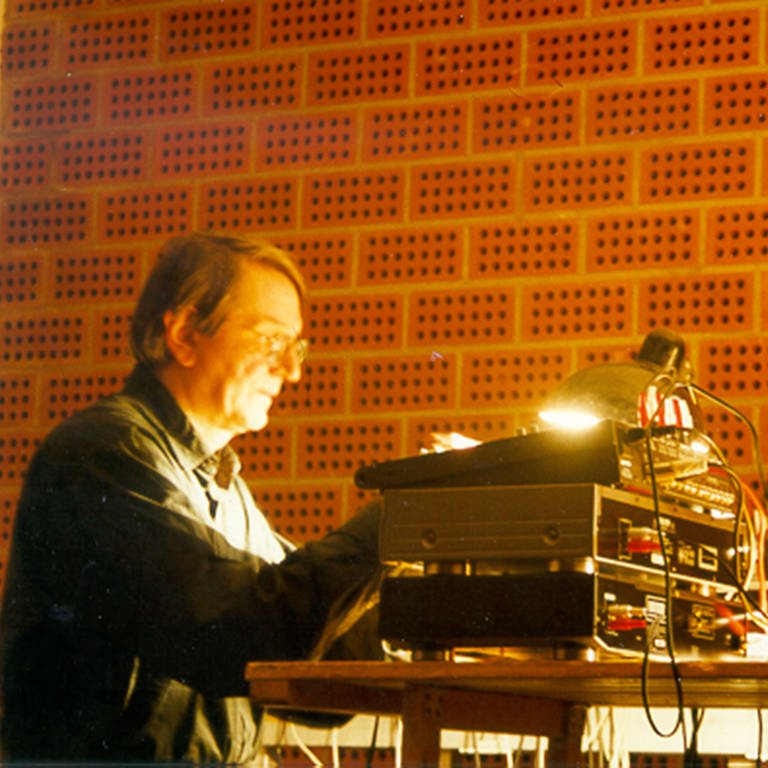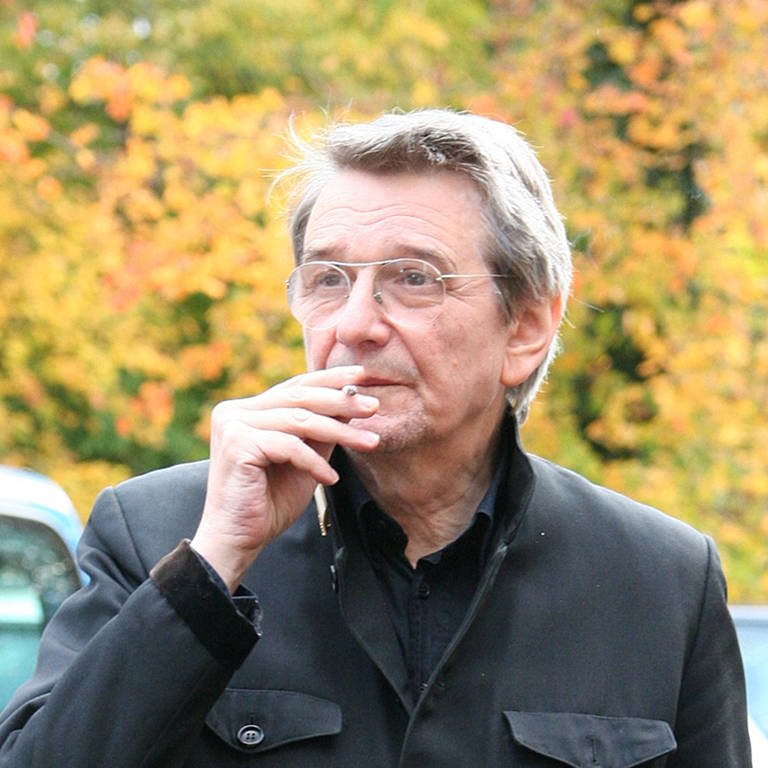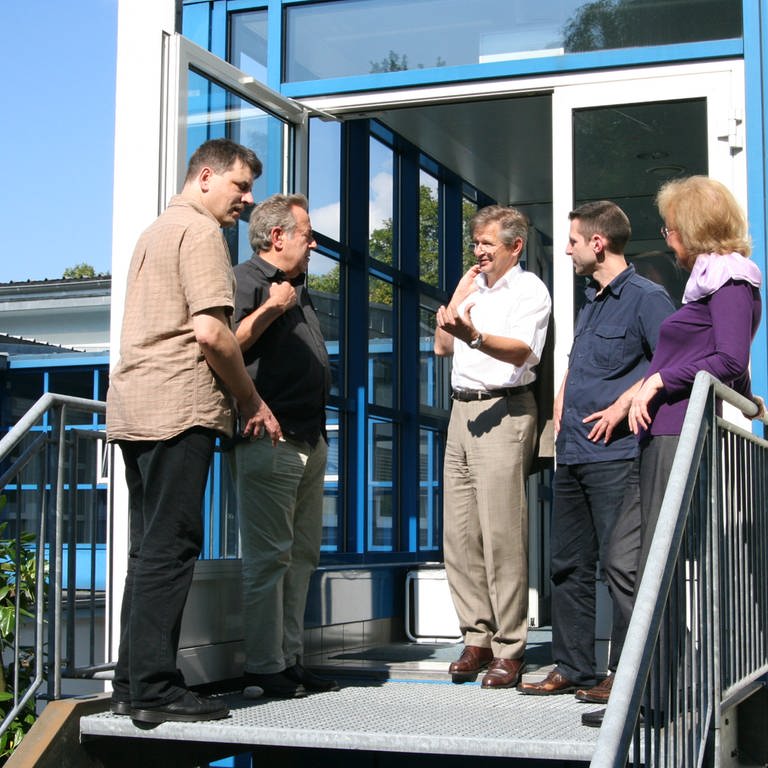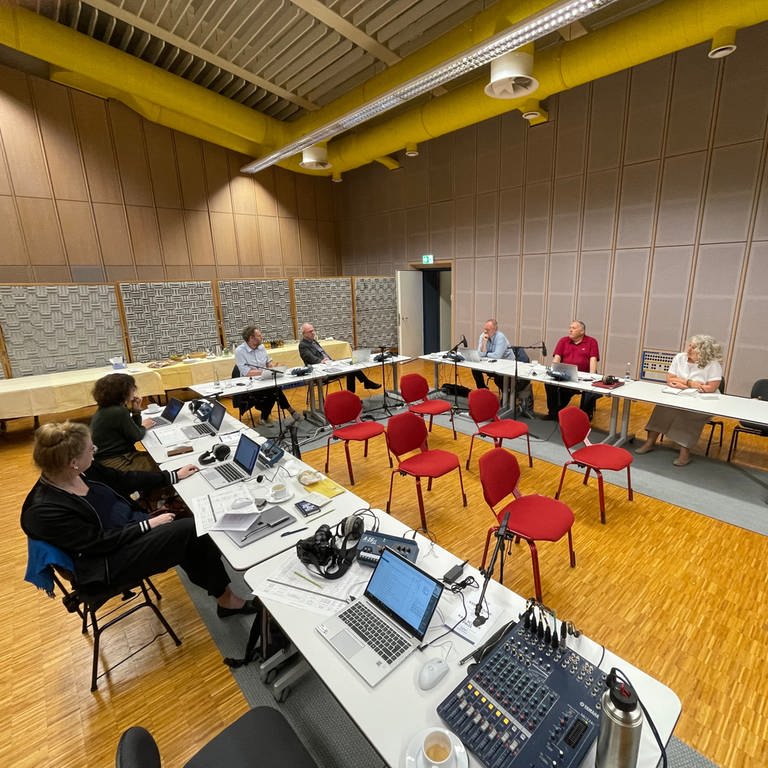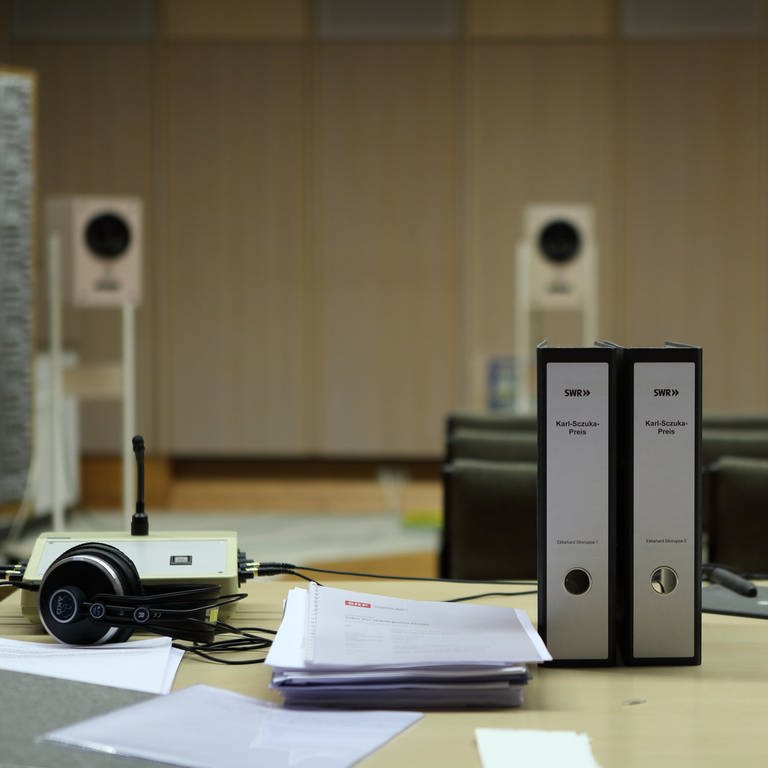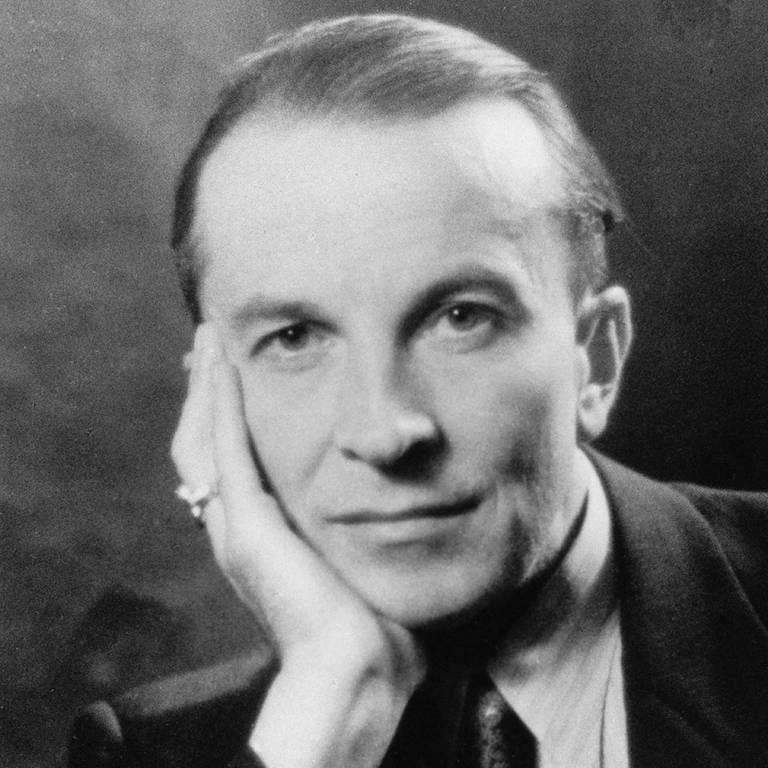The noise art artist Tietchens composed an audio piece from the working sounds of a historical printing press:
The Heidelberg platen (letterpress) can certainly be understood as a rhythm machine: clearly discernible, sometimes intricate rhythms structure its working sounds. What became important in terms of aesthetic action was the question of how the present acoustic materials could be taken out of their context and what sonic transformations they should undergo. Following the rhythmic structures was too obvious, would have been too overt a solution. Nor did I want to bring the "soul" of the machine to sound; I gladly leave the attempt to transcend the machine to more competent collective minds.
The rhythmic structures of the press sounds were transformed into more spatial and/or impulse-like sound events, thus creating a level beyond rigid rhythm. As a result, the "Sechs Heidelberger Studien" are completely detached from the causal noise continuum. I aimed neither for amazement nor for an electro-acoustic fairy tale hour, but rather turned to the material itself to carry out some (of many) combinatorial possibilities of its sonic processing and restructuring. Aesthetic decisions were made only after the formal and acoustic properties of the base material had been thoroughly examined.
Competition 2003 and Jury Statement
The jury of the Karl Sczuka Prize 2003 listened to 86 works before deciding on Asmus Tietchens. The submissions came from 104 applicants from 17 nations, marking one of the highest numbers in the prize's history. Free author productions reached a record high with 38 submissions. The Karl Sczuka Grant Prize, established in 1997, was not awarded this year.
"In his 'Sechs Heidelberger Studien,' Asmus Tietchens crafts a piece of great rigor and clarity from the working sounds of a book printing machine. The sounds, though recognizable as 'concrete,' remain strangely abstract and mysterious; they do not narrate, they do not represent, they are immediately present in a sensual way. Tietchens fully trusts his material, eschewing any symbolic baggage and thereby pleasantly distancing himself from fashionable trends in electronic sound manipulation."
SWR2 program director Hildegard Bußmann presented the award on behalf of the director of Südwest Rundfunk Bernhard Hermann, to Asmus Tietchens. The award ceremony took place on October 18, 2003, as part of the Donaueschinger Musiktage.
Award winner
Asmus Tietchens was born in Hamburg in 1947. In 1965, he began his first experiments with tape recorders and electronic sound generators (sinusoidal oscillators, rhythm machines), as well as concrete noise material. Starting from 1971, he worked with the Minimoog and achieved more complex results by using eight-track tape recorders. In 1975, Tietchens decided to compose and realize electroacoustic music as his "main profession."
In 1980, his first LP release ("Nachtstücke") was launched in France, produced by Peter Baumann (Tangerine Dream). In 1982, he stylistically turned towards Industrial Music, with the LP "Formen letzter Hausmusik" (1984) released on the British label United Dairies. Until 1989, he produced several LPs on international labels of Industrial Music, including works with prepared piano, water sounds, and other concrete materials. In 1986, Tietchens traveled to Brazil for lecture-concerts on behalf of the Goethe-Institut, and in 1991 to Argentina, Chile, and Uruguay.
Since 1989, he has been a lecturer for sound design, communication design, and sound research at the University of Applied Sciences Hamburg (HAW). Since 1991, various CDs have been released on international labels, totaling over 50 LP and CD releases to date. Asmus Tietchens has collaborated with various composers of so-called Noise Music (Merzbow, Achim Wollscheid, Thomas Köner, Vidna Obmana, among others) and has performed both domestically and internationally.
